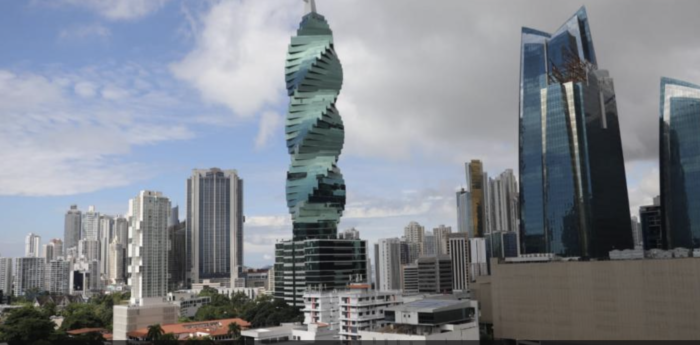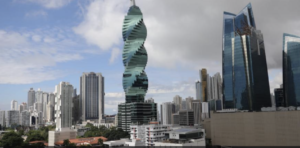According to the Economic Commission for Latin America and the Caribbean (ECLAC), economic growth for 2022 in Central America and Mexico would be 2.5%, while Panama would lead the ranking with 7.0%.
The country’s figure triggers a decrease after the forecasts given by ECLAC at the beginning of the year when it calculated an index of 7.3%.
ECLAC also determined that Panama is among the 16 countries in the region that will not yet have recovered the level of pre-pandemic gross domestic product.
The results emerge from the new edition of the annual report “Economic Survey of Latin America and the Caribbean 2022”, dynamics and challenges of investment to promote a sustainable and inclusive recovery, in which it projects an economic growth for this year of 2.7% on average, in a context of strong macroeconomic constraints that are hitting the economies of the region.
According to the report presented, a sequence of crises has led to the scenario of low growth and inflationary acceleration presented by the global economy, which together with the lower growth in trade, the appreciation of the dollar, and the hardening of Global financial conditions will negatively affect the countries of the region
.” In a context of multiple objectives and growing restrictions, there is a need for coordination of macroeconomic policies that support the acceleration of growth, investment, poverty reduction and inequality, while addressing inflationary dynamics,” said Mario Cimoli, acting executive secretary of ECLAC, at the launch of the Economic Survey 2022.
The document highlights that the countries of Latin America and the Caribbean have a complex economic outlook ahead in 2022 and in the years to come. In addition to lower economic growth, there are strong inflationary pressures, low dynamism of job creation, falls in investment and growing social demands. This situation has translated into great challenges for macroeconomic policy, which must reconcile policies that drive economic reactivation with policies aimed at controlling inflation and giving sustainability to public finances.
To the complex domestic scenario of the region is added an international scenario where the war between the Russian Federation and Ukraine has caused increasing geopolitical tensions, a lower dynamism of global economic growth, lower availability of food and coronavirus disease pandemic (COVID-19), the report notes.
ECLAC projects South America to grow by 2.6% (compared to 6.9% in 2021), the group made up of Central America and Mexico by 2.5% (compared to 5.7% in 2021) and the Caribbean – the only subregion that will grow more than in 2021 – by 4.7%, not including Guyana (compared to 4.0% in the previous year).
The Economic Survey 2022 also shows that the conflict in Ukraine intensified the upward dynamics that commodity prices had already presented since the second half of 2020, causing some of them to reach historic levels. For the average of the region, the effect is mixed, and a 7% drop in commodity terms of trade is projected.
Inflation, on the other hand, has continued to increase, standing at a regional average of 8.4% as of June 2022, which is more than double the average value recorded in the period 2005-2019. At the subregional level, it is observed that in June 2022 the economies of South America had on average the highest level of inflation (8.8%), followed by the economies of the group made up of Central America and Mexico (7.5%) and those of the English-speaking Caribbean (7.3%). This has led central banks to increase their monetary policy rates and reduce monetary aggregates.
On the other hand, the slowdown in economic activity is restricting the recovery of labor markets, especially for women. While the male unemployment rate went from 10.4% at the end of the second quarter of 2020 to 6.9% at the end of the first quarter of 2022, presenting a reduction of 3.5 percentage points, the female unemployment rate registered a decrease of 2.1 percentage points in the same period, going from 12.1% to 10.0%.
Likewise, at the end of the first quarter of 2022, the female labor participation rate (51.4%) lags higher than the male participation rate (74.2%). This delay in the reintegration of women into the labor market is conditioned by the delay in the recovery of economic sectors that concentrate female employment and by the increase in the need for care that was strongly manifested after the beginning of the pandemic.
In its second part, the ECLAC report emphasizes that beyond the dynamics of the business cycle, the low growth of investment in the last three decades has become So reactivating investment dynamics is central to sustainable and inclusive growth, since investment is the bridge between the short and medium term and is essential to address climate change.
Between 1951 and 1979, gross fixed capital formation (investment) in real terms grew on average by 5.9% per year, while between 1990 and 2021 the average growth rate of investment was only 2.9% per year. Therefore, ECLAC urgently calls for increased investment in Latin America and the Caribbean, which was at the lowest levels at the end of 2021 compared to other regions. To achieve the latter, greater coordination between fiscal, monetary and exchange rate policy is necessary and to take advantage of the set of tools available to the authorities so as not to subordinate growth and investment to anti-inflationary policy. In addition, macroeconomic efforts must be complemented by industrial, trade, social policies and the care economy, the document indicates.
It is also emphasized that an important part of the financing to increase investment must come from the mobilization of domestic resources, but international cooperation must accompany this process. Therefore, official development assistance and financing from global financial institutions and development banks must be significantly increased.

